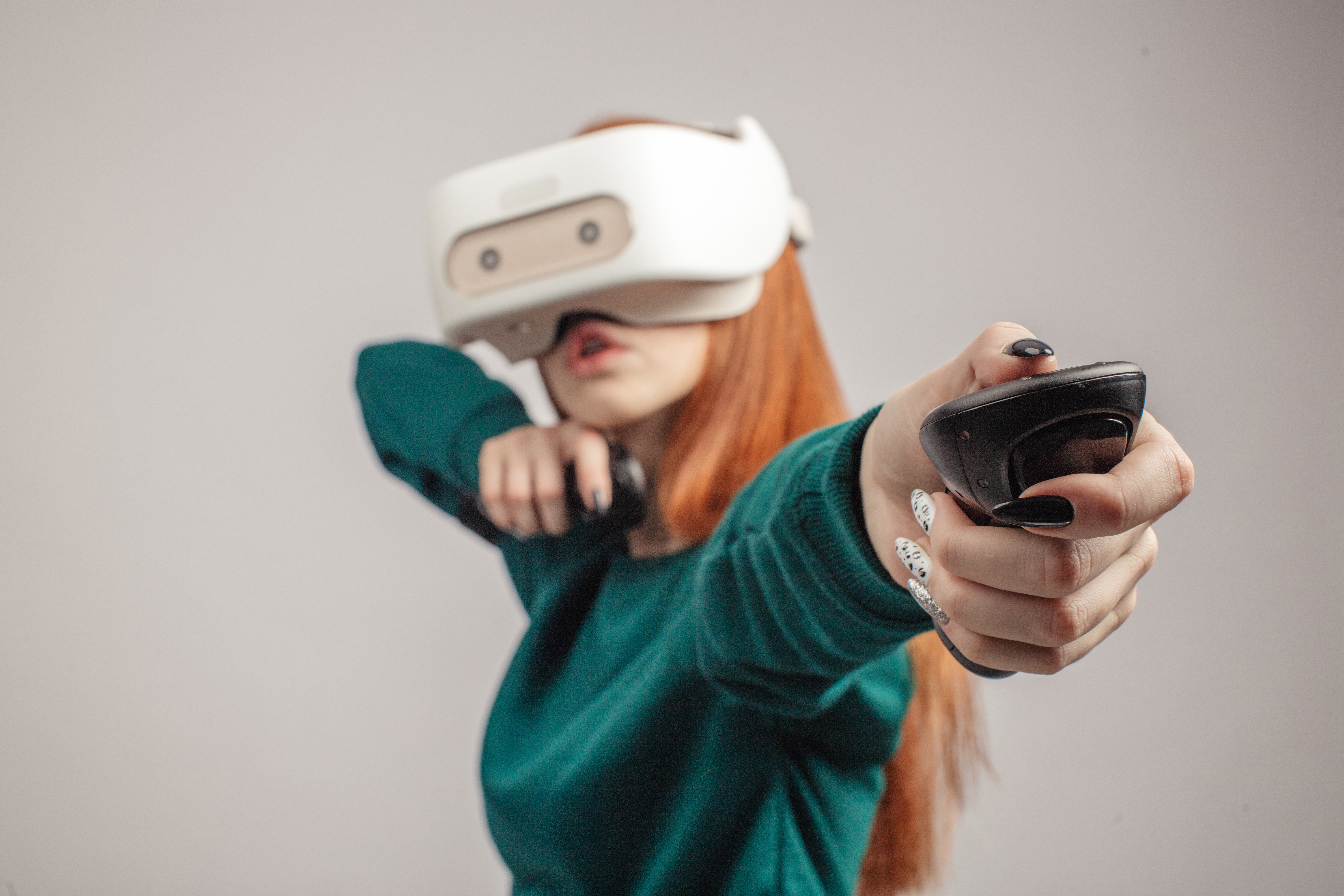What are Virtual Reality Goggles?

What are Virtual Reality Goggles?
Virtual reality goggles are complex devices that can be as easy to use as a smartphone and use many of the same technologies. However, the full range of virtual reality experiences can far exceed the scope of simple VR glasses. Let’s take a closer look at virtual reality goggles and figure out what they really are.
Virtual Reality Visuals
The broad term for the simplest forms of virtual reality glasses, virtual reality goggles, virtual reality headsets, and the like is head-mounted displays. HMDs are placed on the head so that the virtual reality display is directly in front of your eyes. The way these virtual reality displays work uses several technologies.
Stereoscopic Imagery
Virtual reality glasses work like old-fashioned 3D glasses, presenting a slightly different image to each eye to create the illusion of depth.
Wide Field of Vision
It would require enormous processing power to present a full 360 degrees of vision, and it would be wasteful. In real life, we can only see the limits of our peripheral vision, which is about 110 degrees. With a super wide field of vision, virtual reality goggles present an edge-to-edge and top-to-bottom image, so that we never see the “edge” or virtual limit of the virtual world.
Head Tracking Via Gyroscope and/or Accelerometer
To complete the illusion, the simplest VR goggles simply use gyroscope technology to adapt the image in real time as you turn or tilt your head, creating the illusion of a virtual world that completely surrounds you.
By using 3D imagery, a wide field of view, and responding to the angle of your head, VR goggles can create compelling, immersive experiences using the basic technology that already exists in your smartphone. A smartphone-compatible HMD holds your smartphone in front of your eyes, with a pair of special VR lenses between your eyes and the screen of your phone, while other HMDs simply suspend small monitors in front of your eyes that display the virtual imagery. Either way, these glasses, goggles, and displays show you an imaginary world with depth, angle, and rotation that simulates the real world.
Virtual Reality Interactions
However, these technologies only enable VR experiences where you stay in one place and look around you. These can be incredibly compelling for entertainment, but if you want to interact with objects in the virtual world, then VR goggles require a few more technologies.
Accelerometer
Like the accelerometer in your cellphone, many VR systems have hand-held controls with accelerometers that tell the system what kinds of actions you are taking with your hands. These kinds of controls let you interact with objects in the virtual world.
Motion Tracking
Like Kinect and Wii systems, many VR goggles also use motion tracking to provide more detailed information about your body motions. With many of these technologies, the VR HMD is paired with an external camera or sensors that observe your body and motions, and adapt the VR scene accordingly. Motion tracking can also be done with lasers and other technologies.
Haptic controls. Also like gaming systems, VR controllers can have the ability to give you tactile responses to actions in the virtual world.
When you pair VR goggles with sensors that track your motion, and input devices and controllers that interact with virtual objects, you can have a much wider range of virtual experiences. Generally speaking, you need this kind of VR setup to have satisfying interactive virtual reality experiences and games. While goggles alone can entertain you, you need motion and control in order to interact with the virtual world.
Virtual Reality Audio
Sound is an essential aspect of how we experience the world. More than simply conveying information about sound and motion in the external world, it informs our sense of the space around us, and no experience can be immersive without it.
Headphones
VR HMDs are designed to be compatible with headphones. Like the headset itself, headphones have the effect of excluding the outside world and immersing you in the virtual world. With headphones, you can also hear quiet sounds, ambient sounds, and get very accurate directional audio, which is essential for some games.
Speakers
However immersive they are, headphones can also create a closed-in feeling, depriving us of the sense of space and openness that we experience in the real world. Some VR setups involve placing speakers around the VR play area, so that sound really does surround us and seem to be coming from the environment. Of course, this means that VR sound also mingles with real-world sound.
For some people, this can be reassuring, since it means that they will be able to hear someone talking to them, or a phone notification, and remain alert to their real-world surroundings. For some, it detracts from the illusion of virtual reality.
Summary
Virtual reality goggles use the technologies that present a wide field of view, with stereoscopic imagery that presents a virtual environment with the same visual persuasiveness as the real world. Motion-tracking capabilities allow you to move your head, and sometimes your whole body, in this virtual world, and have the simulation respond appropriately. VR cameras, trackers, and sensors perceive your motion and provide the right visual feedback. VR controllers allow your hands to interact with objects in this world and affect the virtual environment. And VR audio makes the visual experience as rich, compelling, detailed, and immersive as the real world.
While you can look at a virtual world with goggles alone, the resulting experience isn’t much more advanced or sophisticated than wearing 3D glasses. In order to suspend disbelief and feel as though you are transported to a virtual world, you need the technologies that at least respond to your head movement, and the audio that immerses you in the space. To move around and interact with this virtual world, you need spatial motion tracking and some form of controller.
The most advanced VR systems use advanced controllers, and devices like treadmills, to expand your possibilities in virtual reality. And we are still at the early stages of this technology, with more to come.
